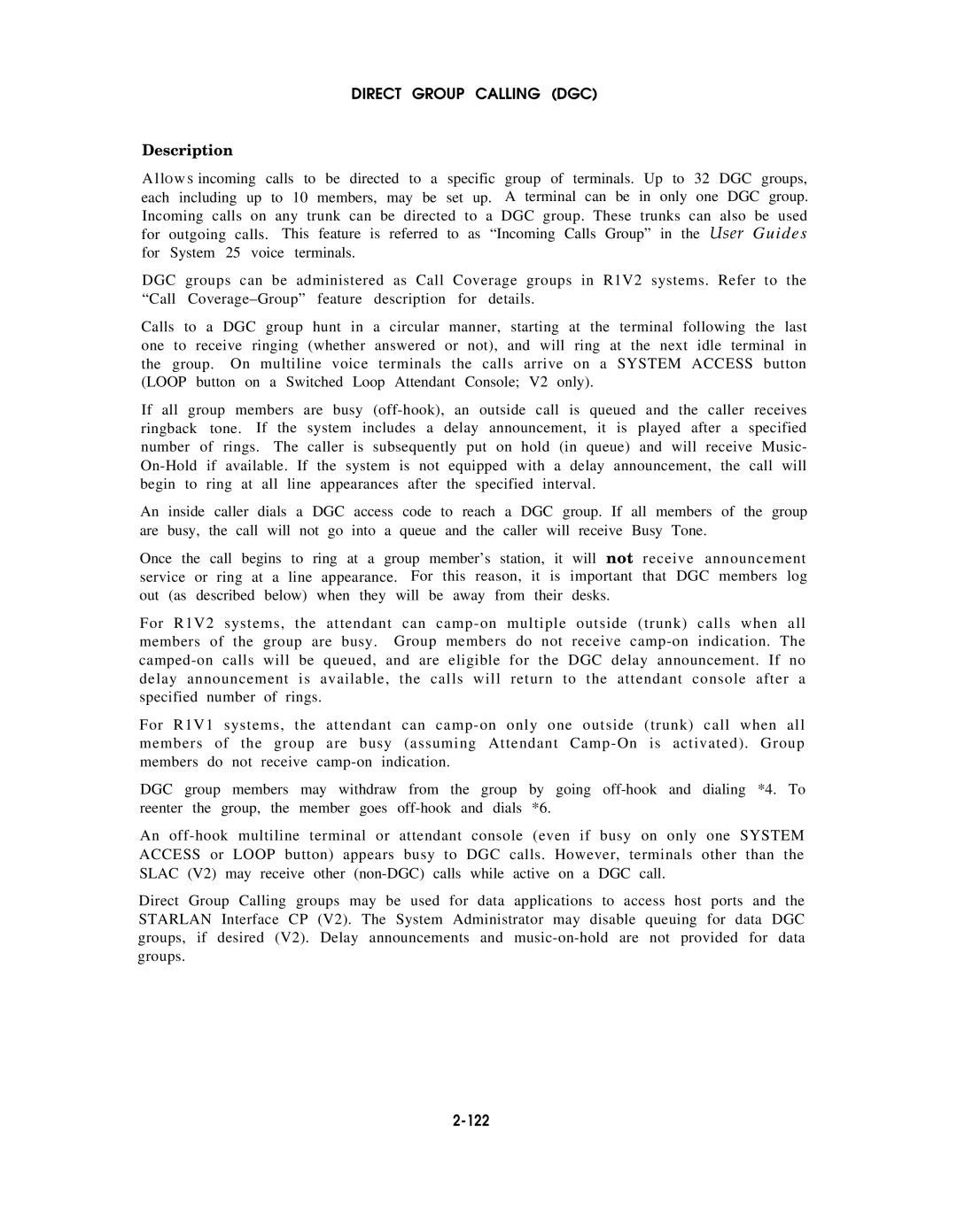DIRECT GROUP CALLING (DGC)
Description
A llO w S incoming calls to be directed to a specific group of terminals. Up to 32 DGC groups, each including up to 10 members, may be set up. A terminal can be in only one DGC group. Incoming calls on any trunk can be directed to a DGC group. These trunks can also be used for outgoing calls. This feature is referred to as “Incoming Calls Group” in the User G u i d e s for System 25 voice terminals.
DGC groups can be administered as Call Coverage groups in R1V2 systems. Refer to the “Call
Calls to a DGC group | hunt in a circular manner, starting at the | terminal following the | last |
one to receive ringing | (whether answered or not), and will ring | at the next idle terminal | in |
the group. On multiline voice terminals the calls arrive on a SYSTEM ACCESS button (LOOP button on a Switched Loop Attendant Console; V2 only).
If all group members are busy
An | inside | caller dials | a DGC | access | code | to reach a DGC group. If all members of the group |
are | busy, | the call will | not go | into a | queue | and the caller will receive Busy Tone. |
Once the call begins to ring at a group member’s station, it will not receive announcement service or ring at a line appearance. For this reason, it is important that DGC members log out (as described below) when they will be away from their desks.
For R1V2 systems, the attendant can
For R1V1 systems, the attendant can
DGC group members may withdraw from the group by going
An
Direct Group Calling groups may be used for data applications to access host ports and the STARLAN Interface CP (V2). The System Administrator may disable queuing for data DGC groups, if desired (V2). Delay announcements and
